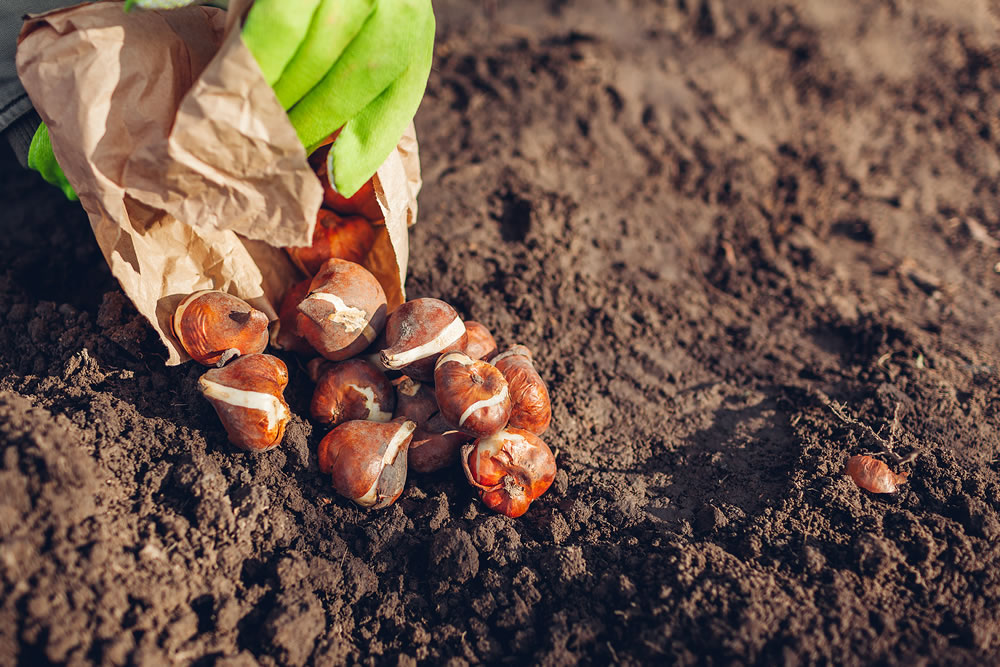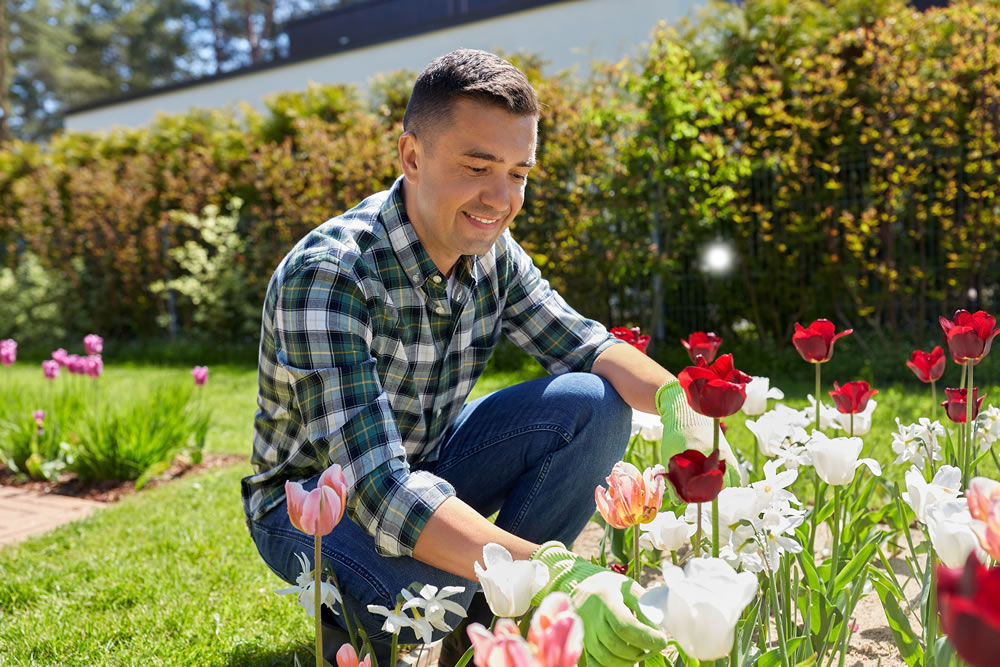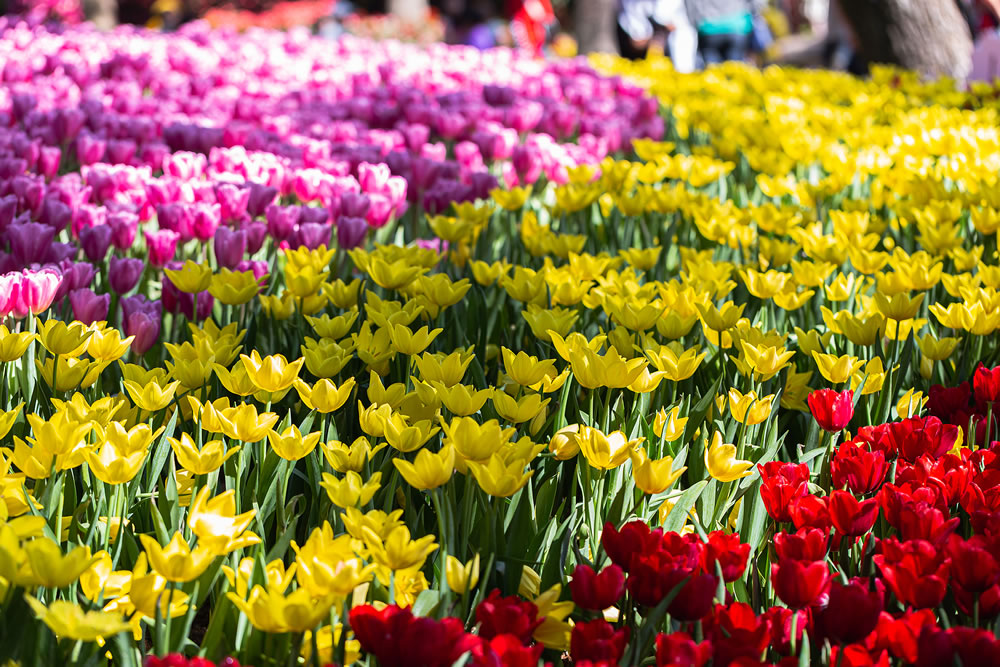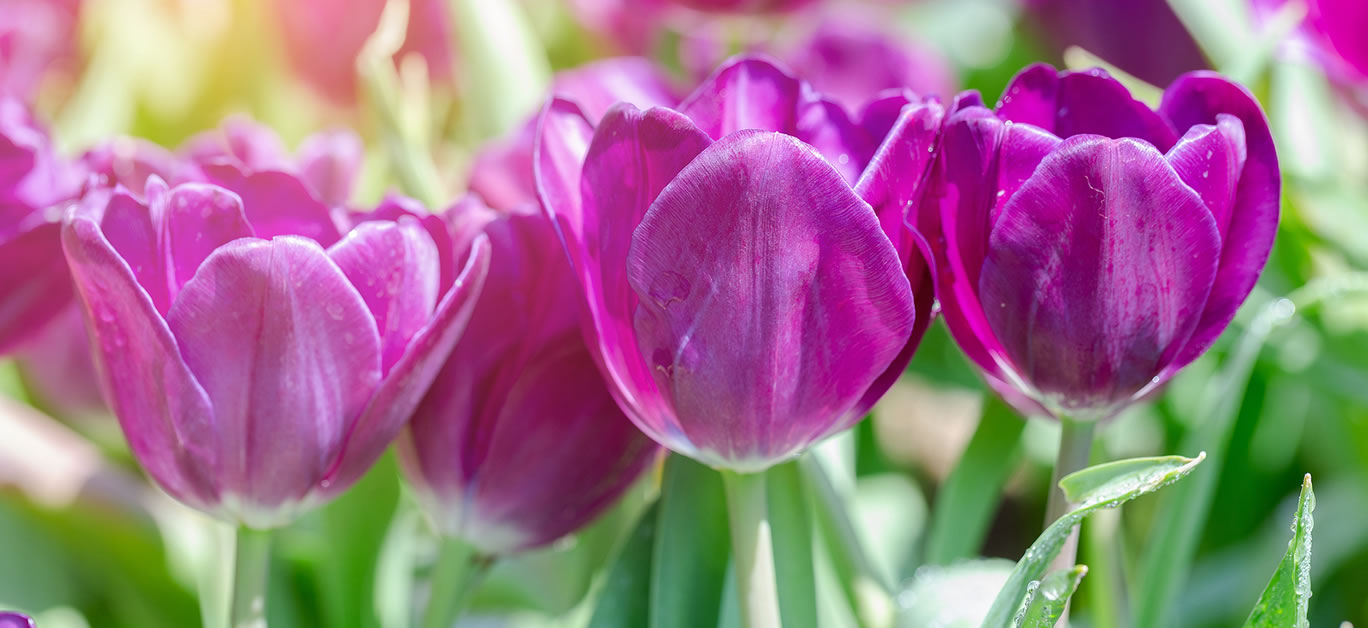There’s nothing quite like those first, fresh blooms of spring, and from tulips to daffodils, the new season colours are always a welcome sight after months of grey skies, rainy weather and cold winds. Whilst long days in the garden might seem miles away at the moment, November is actually the perfect time to plan ahead, and to plant your flowerbeds so that they are looking spectacular come springtime.
Tulips, in particular, fare well when planted at this time of year, so if you want to ensure a lighter, brighter and all-round more beautiful 2021 then it’s your most important job to do this month. Planting now, when the soil is a little colder, will mean there is less chance of a fungal disease called ‘tulip fire’ ruining the spectacular spring displays you have planned.
With lockdown still in full swing, the likelihood is that you’ve got a little extra time at home on your hands, in which to do it, too – so there’s no better opportunity to get ahead.
How to plant tulips

The prime time for tulip planting is anywhere between the beginning of October and Christmas, so there is still a generous window in which to get yours bedded in. The sooner you do so, the earlier in spring they will bloom, so if your days need brightening up sooner rather than later, then there’s no time like the present.
Tulips require good drainage, so inspect the soil you will be working with and, if it’s a little on the heavy side, add some grit or sand to it and mix. You won’t want your bulbs to be sitting in water-logged soil all season, as this won’t bode at all well for the end result.
After that, it’s time to get digging.
Tulips fare best when planted deep in the soil. Their long, straight stems can be somewhat flimsy without ample support from the surrounding earth, so aim for a hole that is around 30cm in depth for your tulip bulbs – a crowbar can make for a surprisingly good digging tool.
When planting, be sure to space your bulbs around 10cm apart, and place them into your hole with the tips facing upwards. Inspect them first to ensure that each one looks healthy and in good shape – if not, then set the damaged or decaying ones aside, as these won’t produce the beautiful results you will want.

If you don’t have flowerbeds to work with and are keen to brighten up a smaller space like a courtyard, then container planting is an alternative. Here, drainage is less of an issue, too. Plant in layers at about two to three times their depth, in a combination of early, medium and late blooming tulips to ensure that your pots are looking their best all spring long.
It’s not always necessary to buy fresh bulbs each year, but this really comes down to the varieties you choose. Highly-bred varieties bloom the brightest in the first year, after which they can begin to fade in both colour and size, so you’ll want to purchase new ones for your pots and containers each autumn, The bigger and plumper the bulbs, the bigger the resulting flowers, so opt for the largest you can get your hands on for some of the most impressive spring displays.
If you’re eager to see the fruits of your labour as soon as possible, then opt for earlier flowering varieties, such as the vivid ‘Orange Emperor’ or its subtler and slightly pinker counterpart, ‘Apricot Beauty’ for the earliest possible flowers. These both tend to come out in March, and are soon followed by the fuller and more dramatic ‘Verona’ variety, which will usually flower in early April.

At the end of the season, as your flowers start to fade, you can dispose of them rather than leaving them to die back slowly. Often, doing so can make your garden space look messy and unkempt, so to maintain an immaculate image to be proud of, keep on top of things at the time.
Shorter and smaller varieties of tulip tend to be more durable, and while they might not be quite as impressive as their highly-bred counterparts, they are certainly more reliable. These types will come back into bloom every year, without diminishing in appearance – so are a good option if you’re a fan of slightly lower-maintenance gardening. These work well in rock gardens and troughs that will last throughout the season with ease.
Tulips are a great way to brighten up the inside of your home as well as the outside when spring rolls around, and as cut flowers, can last for up to ten days in a vase – although for that bit, you have a little longer to wait.
In the meantime, there’s no better time to get on those designer waterproofs and roll up your sleeves – or, for an easier life, get the gardener in to do it for you!






















